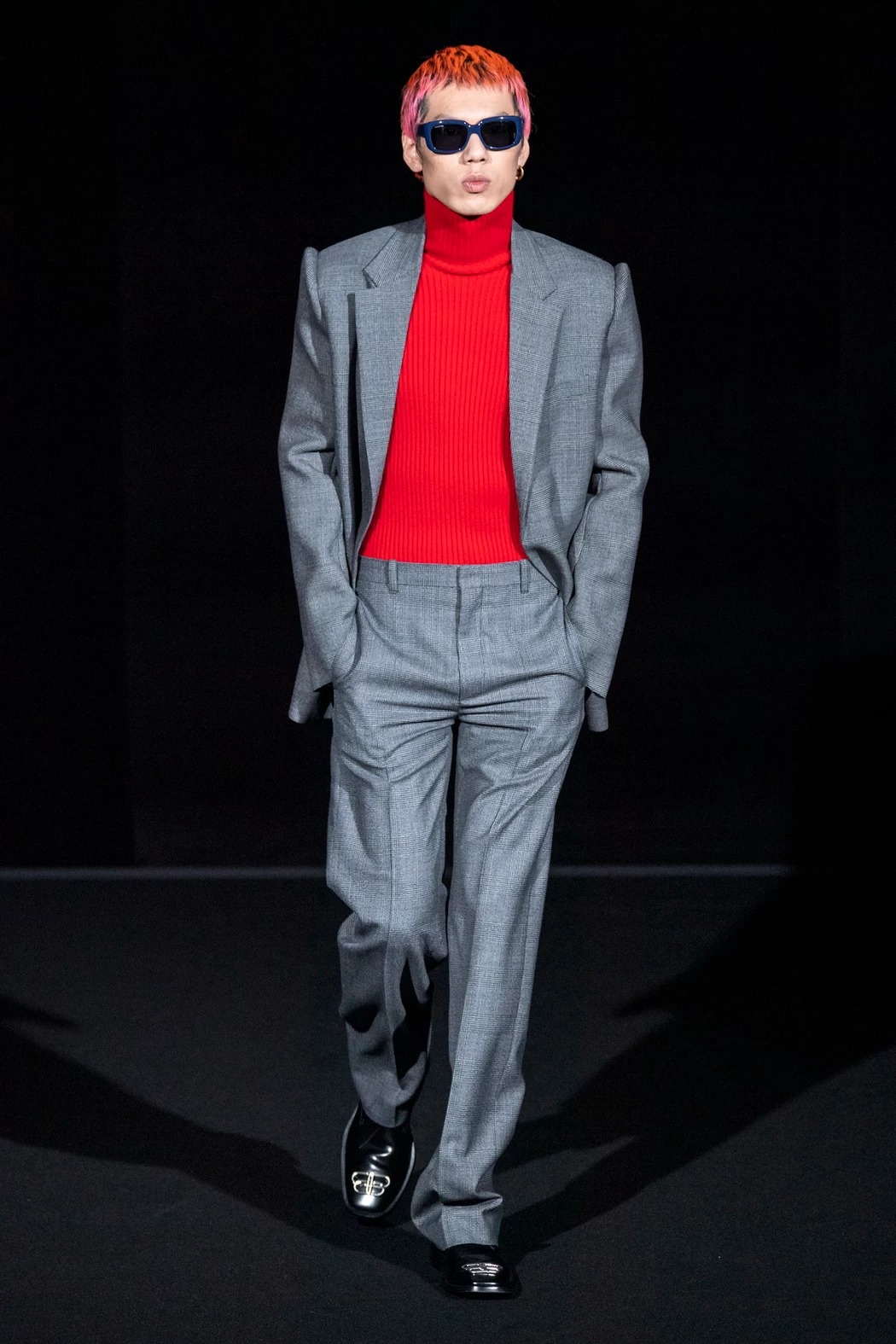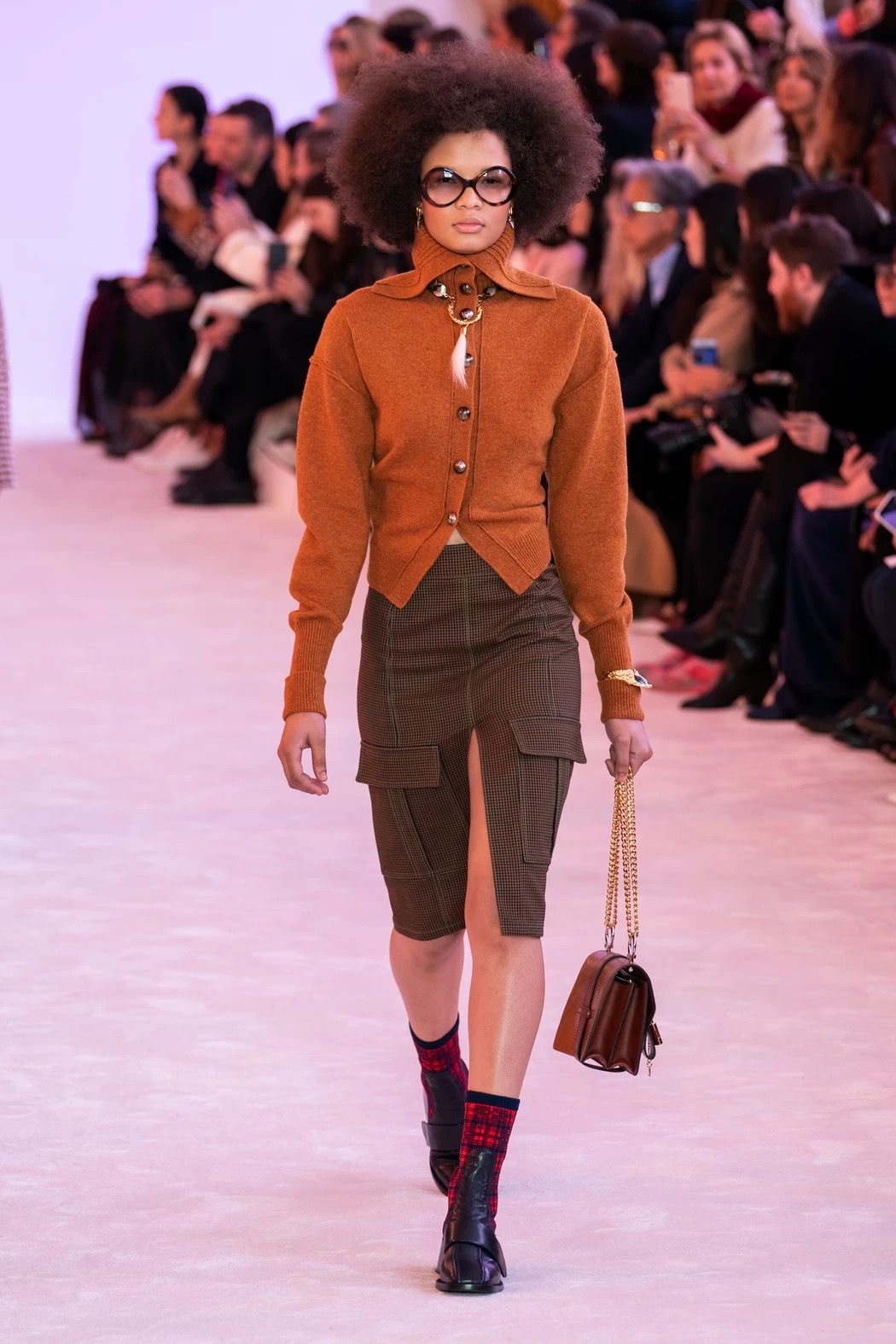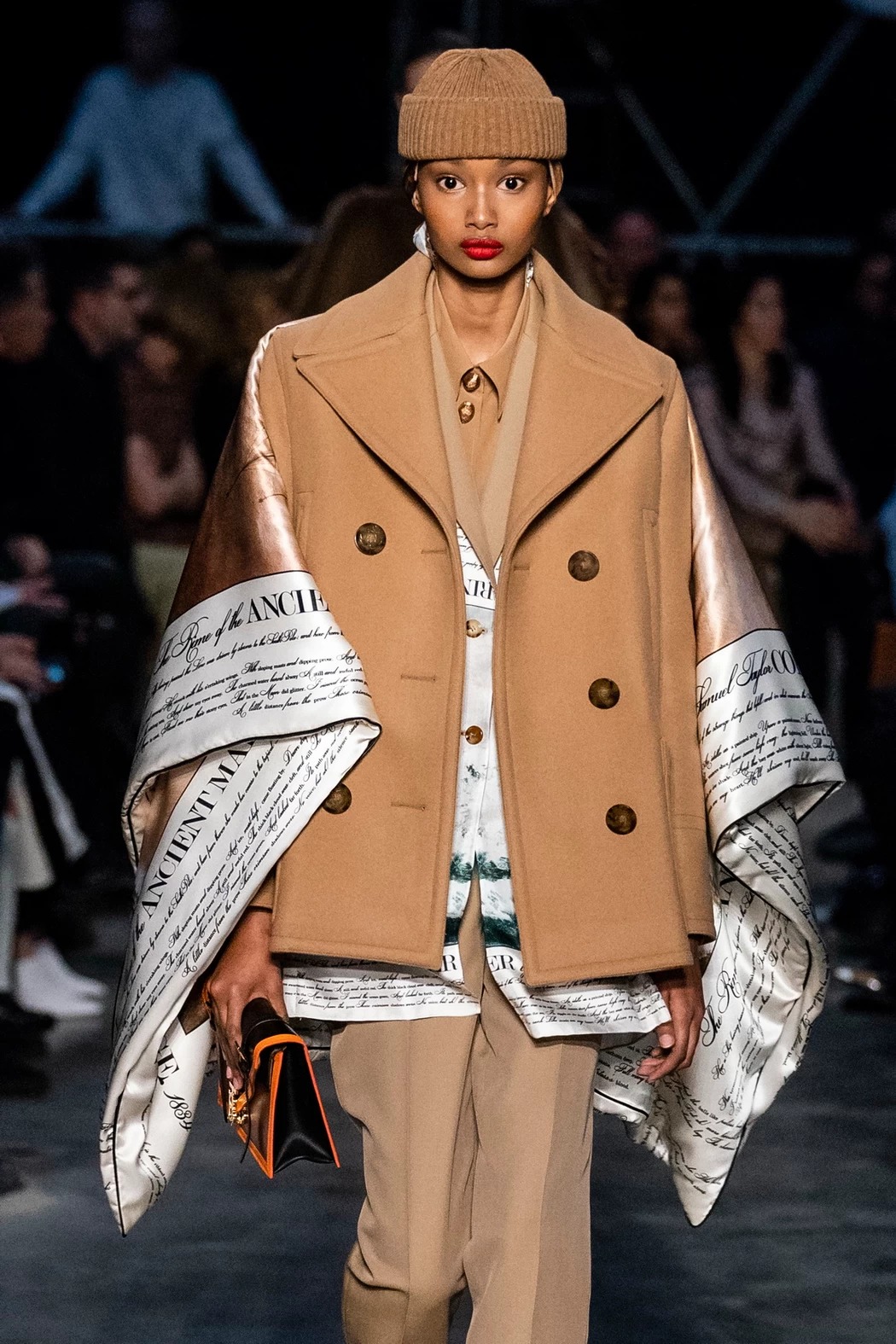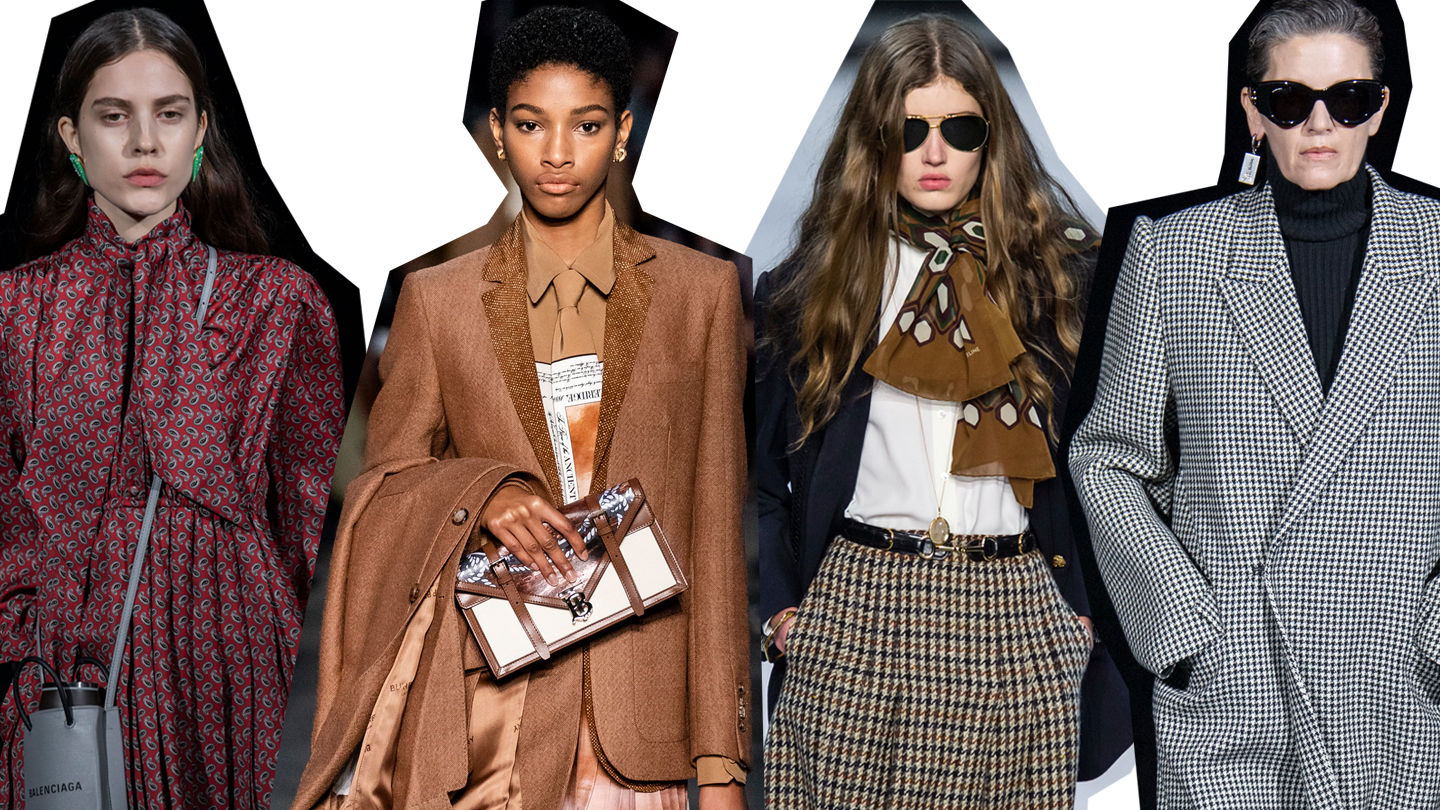“Inès, please!” an immaculately-coiffed maman would hiss, her horror manifest in the furrow of her typically ironed brow. “Remove those awful ‘trainers’ at once! ” “But maman, don’t you like them? They’re Balenci— ” “AT ONCE!” yells maman with finality. A silence as unyielding as a day-old baguette would inevitably descend over the terrace, the only thing slicing through being maman’s glare. All too aware of the futility of resistance, Inès would soon concede and switch out her newly-copped Triple Ss for the two-tone Chanel ballerina pumps she carried with her for occasions just like these. It’s strange to think that it was only a handful of seasons ago that such scenes would regularly play out in the cafés of Paris’ better-heeled districts: mothers would openly wage wars of attrition on their daughters, fearing that the Sonia Rykiel wardrobes they’d spent their perfectly-powdered lifetimes building would one day fall into hands more inclined towards high-end ‘casual’ wear.
If recent runway shows are anything to go by, it would seem that the war has been won. The unsurprising verdict? Mother always knows best. After threatening in unison to sever their daughters’ credit card access, and with it a good 60% of most French houses’ revenue, design teams all across Paris have dropped streetwear in a bid to appease she who controls the purse strings.

Balenciaga
Among the houses with the most to make up for is no doubt Balenciaga, best-known among the city’s mothers as the once-respected couture house that has since taken to reselling copies of their husbands’ running shoes to their easily misled jeunes filles. To add insult to injury, they’ve been doing so brazenly from its base on Rue de Sèvres on Paris’ prim Left Bank. In a suitably subtle acknowledgement of the sins for which he must repent, Demna Gvasalia’s offering for autumn/winter 19 was replete with chic outerwear much more in line with the character of the quartier, like this tailored houndstooth number or this one in sumptuous faux-leo-lined leather, insouciantly wrapped and cinched at the waist. And for Inès? Well, we can’t expect her to latch onto such a sober palette quite yet, but transitional pieces, like a graffiti-ed neon-pink day-dress, with a darling pussy bow at the neck, offered a satisfactory introduction to an appropriate silhouette.

Chloé
Second only to Isabel Marant, Natacha Ramsay-Levi is the apple of any maman’s eye: in just a few seasons at the helm of French-Girl™ favourite Chloé, the rive gauche native has managed to satisfy the harsh demands of a client-base stuck in the neighbourhood’s 70s heyday, peppering the maison’s coquettish flair with modernity and colour, humour and wit. Her work represents that effortless lightness and femininity that any archaically French mother would wish of their daughter, dashed through with the wink of a smokey eye. Unlike in the case of Balenciaga above — the house at which Ramsay-Levi, incidentally, spent 15 years as Nicolas Ghesquière’s right hand — chère Chlo Chlo has little to atone for. The mothers approve, Natacha, the mothers approve.

Celine
The award for the greatest turnaround, of course, goes to Celine. And, no, calm down, I’m not referring to ‘old Céline’ -> ‘new Celine’, but rather to Hedi Slimane’s aesthetic 180 in the six months between his spring/summer 19 and autumn/winter 19 collections. On the presentation of the former, the mothers were livid: Phoebe’s collections were cut perfectly to the measure of days spent poring over Proust and wandering the city’s galleries. These tarty frocks did nothing short of beg their impressionable girls out to reckless nights in Pigalle. “Comme c’est dégoûtant!” they cried. However, after Hedi’s second womenswear turn, those taking to the streets for the return of ‘old Céline’ got more than they’d bargained for. Mining the archives of the house, rather than those of his own career, he bypassed the Philo-era to present an ode to the breezily chic outfits of Vipiana-era Celine (sans accent): tweed jackets and pleated skirts, day dresses and broad leather culottes, demurely cinched at the waist with discreet horsebit-buckle belts, all featured. For the mothers, it was a veritable trip down memory lane, a whiff of the refined gallivanting of their own youths.
Those days weren’t always so proper though, as pieces like a full-length tan-leather day dress cheekily implied. As anyone that’s seen Belle de Jour or Jeune et Jolie will know, France’s bourgeoisie, polished as it may appear, is shot through with a sauciness that Britain’s upper crust could only ever dream of…

Burberry
Designers here, however, have been a touch slower to turn to our upper classes for inspiration — not that it hasn’t stopped certain brands from trying: for his sophomore collection at Burberry, Riccardo Tisci served up an eclectic spread of looks for ravers, sportswear-stans, and Britain’s landed gentry alike, That said, I’m not sure how many of the latter will pick these pieces up: blowing thousands on new trenchcoats isn’t really an option when you can barely stretch to replastering the walls of your crumbling manor house. There were, however, a fair few looks that suggested that the British fashion juggernaut was flirting with the wallets of our stubborn mamans across the channel. From the fine knit cashmere pullovers, tastefully embellished with gold hardware, to the skirts, wrapped or pleated in tan leather, or even cut from silk scarves printed with the house’s Peter Saville-designed ‘TB’ monogram, not a single piece would look out of place on any Rykiel-padded rack.


